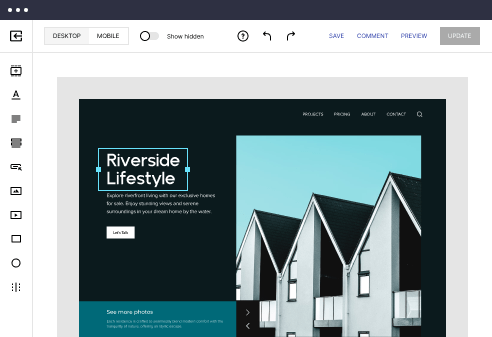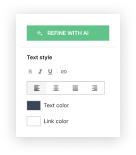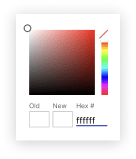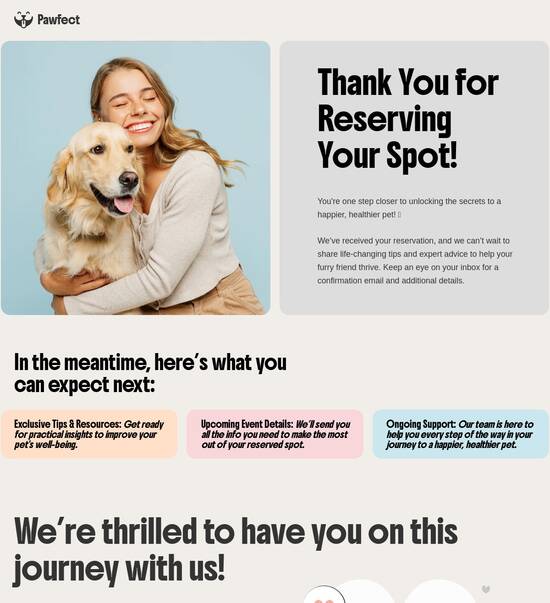
HTML page template for EV charging companies
Use TemplateAbout template
Give your EV charging companies a boost with our professional landing page templates. Ready to turn visitors into customers?
Recommended templates
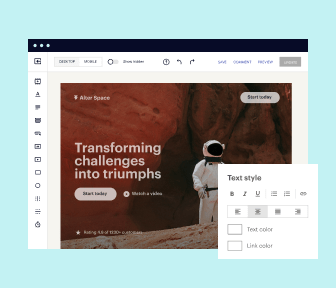
Easy to build without coding
With the intuitive drag-and-drop builder, anyone on your team can create high-converting pages without any knowledge of code or design. Make enhancements to your landing page with custom widgets using Javascript, HTML/CSS, or third-party scripts.
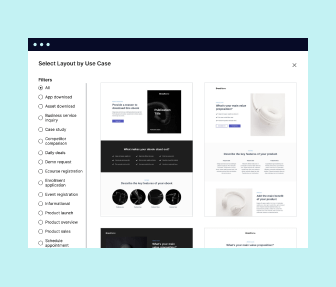
Multiple layouts for any industry and goal
Select from 500+ landing page layouts built to boost conversions across industry-specific scenarios. Customize them by adjusting fonts, adding images, and generating on-brand content with the AI assistant. Quickly scale with Instablocks® and Global Blocks that you can save, reuse, and update globally.

Loads fast and looks polished on any device
Every template is responsive, which means they present professionally on any device and load blazingly fast with our Thor Render Engine. You can also power them up with Google AMP technology to deliver an unparalleled mobile experience and drive higher conversions.
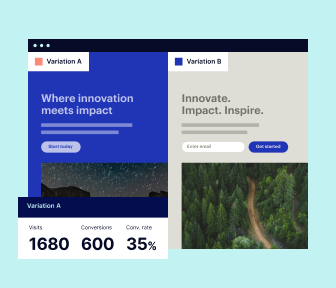
Robust analytics & experimentation
Get real-time updates and reporting across all your devices, showing the number of visitors, conversions, cost-per-visitor, and cost-per-lead. Launch AI-powered experiments, run A/B tests, and use heatmaps to analyze user behavior, then optimize your landing page to maximize conversions.
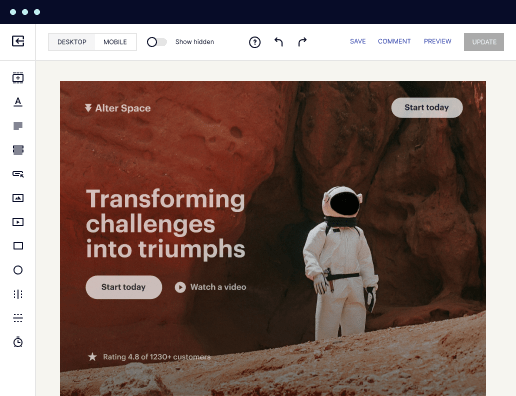
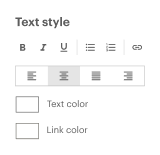
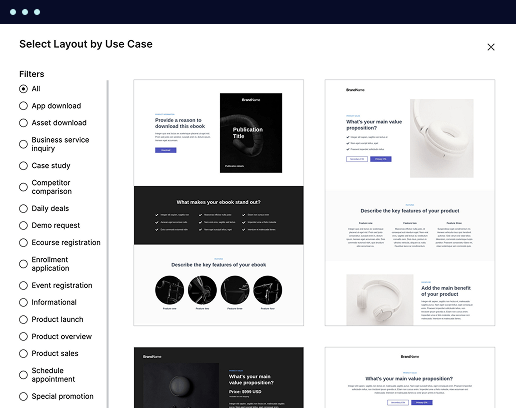

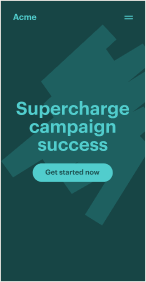
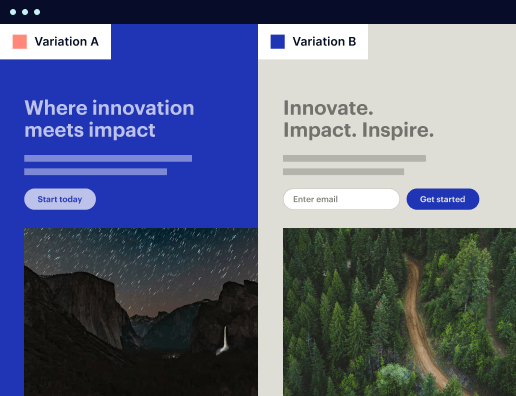
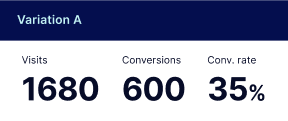
Easy to build without coding
With the intuitive drag-and-drop builder, anyone on your team can create high-converting pages without any knowledge of code or design. Make enhancements to your landing page with custom widgets using Javascript, HTML/CSS, or third-party scripts.
Multiple layouts for any industry and goal
Select from 500+ landing page layouts built to boost conversions across industry-specific scenarios. Customize them by adjusting fonts, adding images, and generating on-brand content with the AI assistant. Quickly scale with Instablocks® and Global Blocks that you can save, reuse, and update globally.
Loads fast and looks polished on any device
Every template is responsive, which means they present professionally on any device and load blazingly fast with our Thor Render Engine.
Robust analytics & experimentation
Get real-time updates and reporting across all your devices, showing the number of visitors, conversions, cost-per-visitor, and cost-per-lead. Launch AI-powered experiments, run A/B tests, and use heatmaps to analyze user behavior, then optimize your landing page to maximize conversions.
All the features you need to build lead-generating landing pages
Explore more featuresLearn how to build top-performing landing pages for any goal
FAQs
Leading the way in building high-performing landing pages





Maximize your digital marketing with Instapage's powerful landing page platform
Instapage is the most powerful landing page and conversion rate optimization (CRO) platform designed to empower marketers in various sectors, including business services, tech, education, and financial services. With Instapage, you can create highly effective landing pages that accelerate lead generation and optimize the ROI for all digital marketing campaigns. Here’s a step-by-step guide on how to leverage Instapage for crafting landing pages that convert.
Step 1: Choosing the Right Templates for Your Campaign
Selecting the right templates is crucial for setting up an effective landing page. Instapage provides over 100 high-converting templates along with lead generation elements that you can customize to suit your specific campaign needs. This allows you to launch engaging landing pages rapidly without a hefty investment in design.
- High-converting templates are tailored specifically for various industries, ensuring that design never compromises function.
- Customizable lead generation elements enable marketers to capture leads effectively; think forms, CTAs, and video integration.
- The library of Instablocks aids in easy drag-and-drop customization, allowing users of any skill level to create stunning landing pages.
Step 2: Optimize Pages for Higher Conversions
Optimization is at the heart of maximizing your landing page performance. With built-in experimentation features, Instapage facilitates A/B testing and provides crucial analytics to improve user engagement.
- Use detailed heatmaps to analyze user interactions on your landing pages—understanding where users click most is fundamental for adjusting layout.
- Conduct A/B testing to compare different headlines, images, or CTA placements; this allows you to identify the most effective elements and make data-driven improvements.
- Leverage the analytics dashboard to track conversions and other key metrics, making ongoing optimization straightforward.
Step 3: Personalizing Content for Increased Engagement
Engagement can significantly increase by personalizing the content on your landing pages. Dynamic text replacement and ad mapping ensure that visitors see content that resonates with their expectations and needs.
- Dynamic text replacement allows you to tailor headlines and body copy according to specific ad campaigns, enhancing relevance.
- AdMaps help align your ads with the appropriate landing pages, streamlining the user journey and ensuring consistency.
- Utilizing audience-level metrics from Instapage, you can tailor experiences that meet different audience segments' needs, significantly boosting engagement.
With these steps, anyone can harness the power of Instapage to not only create high-converting landing pages but also analyze and optimize them for ongoing success in their digital marketing efforts.
Don't miss out on transforming your marketing campaigns through effective landing page strategies. Start using Instapage today for smarter marketing.
Whether you are in business services, education, or any tech vertical, Instapage offers the tools to elevate your digital marketing strategies. Sign up now and see the results for yourself!
People also ask about HTML page template for EV charging companies
HTML page template for EV charging companies
Understanding the unique needs of electric vehicle charging companies
The electric vehicle (EV) charging market is experiencing rapid growth as more consumers transition to electric vehicles. Global EV sales have surged, leading to an increased demand for charging solutions. For EV charging companies, establishing a strong online presence is crucial for capturing market share and driving business growth. A professional website acts as a foundational tool to attract customers, provide essential information, and facilitate transactions.
The challenge for EV charging companies lies not just in developing robust charging infrastructure, but also in ensuring that potential customers can easily find and access their services online. A well-designed website can highlight the unique features of various charging stations, offer real-time availability information, and create an engaging user experience that builds customer loyalty.
Current growth trends: The EV market is growing, with governments and consumers pushing for sustainable transportation solutions.
Importance of a robust online presence: A well-structured website can serve as a gateway for customers looking for charging solutions, offering essential information about services, locations, and support.
Essential features of a website for EV charging solutions
An effective EV charging company website should include user-friendly navigation, accessibility features, and mobile responsiveness. User-friendly navigation directs customers quickly to vital information such as service locations, pricing, and support options, enhancing their overall experience. Websites that are challenging to navigate can lead to frustration and potentially lost business.
Additionally, accessibility is essential, ensuring that all users, including those with disabilities, can access information without barriers. Websites should cater to a diverse audience, promoting inclusivity and usability across all devices. With a growing number of users accessing websites through mobile devices, ensuring mobile responsiveness is not just an option but a necessity.
Crafting an effective HTML page template
An effective HTML page template for EV charging companies includes several core elements designed to maximize user engagement. The header is crucial, providing branding opportunities and establishing first impressions. Strategically placing the company logo and structuring the navigation menu with sections like home, services, locations, and support helps users easily navigate the website, improving accessibility and user experience.
Branding opportunities and logo placement: Ensure your logo is clear and prominently placed, reflecting your brand identity.
Navigation menu structure: A well-organized menu aids users in quickly finding the information they seek.
The footer of the template should also contain essential links such as privacy policy, contact information, and social media handles. This area can include legal disclaimers and a site map, supporting both user needs and compliance with regulations.
Structuring containing sections
Organization is vital when structuring containing sections of the webpage. Utilizing a column layout offers improved visual balance and allows for better content hierarchy. A single-column layout is suitable for straightforward information presentation, while a multi-column format can be used for comparative information, making it easier for users to digest content.
Single-column vs. multi-column layouts: Use single columns for simpler content and multi-columns for comparative data to enhance readability.
Best practices for visual balance and content hierarchy: Ensure ample whitespace and clear headers to facilitate easy scanning of information.
Design elements play a key role in user engagement. The use of whitespace enhances clarity and focus, allowing the content to breathe and making it easier to navigate. Incorporating calls to action within columns serves to guide users towards desired actions, such as booking a charging session or signing up for more information.
Design customization and aesthetic appeal
The choice of colors and fonts significantly impacts the mood of your website and implicitly communicates your brand to customers. Utilizing color psychology can help reinforce your brand's values and objectives. For instance, green often signifies sustainability and eco-friendliness — crucial themes for EV charging companies. It's essential to choose a color palette that aligns with your brand identity and appeals to your target audience.
Color psychology in EV branding: Opt for colors that reflect your commitment to eco-friendly initiatives.
Font pairing for readability and brand consistency: Choose complementary fonts that reflect your brand’s character while ensuring easy readability.
Images and visuals are powerful tools for storytelling within your website. High-quality imagery can evoke emotions and articulate your brand's message more effectively than text alone. A strategy to consider is using images that showcase your charging stations, customers using services, or infographics related to EV charging benefits. Each image should reinforce your brand ethos and create a more immersive experience for the visitors.
Scripting the user experience: the role of JavaScript
JavaScript plays a pivotal role in enhancing user experience across websites. One crucial aspect is understanding the DOMContentLoaded event, which signifies that the HTML document has been completely loaded and parsed. By optimizing execution after this event, webmasters can minimize loading times and improve overall site performance. Speed is critical; slow websites lead to high bounce rates and can impact conversions negatively.
How DOMContentLoaded impacts user experience: Effective loading strategies can significantly elevate the user's interaction with the site.
Techniques for optimizing loading speed: Utilize tools to streamline scripts and minimize request counts for better performance.
Additionally, implementing lazy loading for images and videos can further enhance page speed. Lazy loading defers the loading of non-essential resources until the user scrolls down the page, conserving bandwidth and improving initial loading times. This technique can be crucial for users on mobile devices with limited data plans or slower connections.
Enhancing functionality with HTML features
Integrating video content can elevate an EV charging company's online presence, allowing for more dynamic storytelling. Videos that provide explanatory content, highlight different charging services, or showcase customer testimonials can create a deeper connection with prospective customers. Embedding these video assets should be managed strategically to maintain fast loading speeds while still engaging visitors.
Types of videos that resonate with the audience: Focus on informative and engaging video formats that relate to your services.
Best practices for embedding video content to enhance engagement: Utilize responsive video players to ensure a seamless experience on all devices.
Addressing common challenges in template development
Performance issues are common challenges faced in template development. Identifying and fixing these loading problems should be a priority to ensure a smooth user journey. This may involve optimizing images, eliminating unnecessary scripts, and adopting newer coding standards. Moreover, ensuring responsive design is crucial; your site must perform well across a variety of devices from desktops to smartphones.
Identifying and fixing common loading problems: Regularly audit your website for performance issues to maintain optimal loading speeds.
Importance of responsive design: A responsive approach ensures that every user has a satisfying and effective experience regardless of the device used.
Additionally, utilizing a download panel can engage users further by offering downloadable resources such as guides or brochures. This content not only provides value to the user but also establishes your authority in the EV charging space. Follow-up strategies should be implemented post-download to keep the conversation going and encourage conversions.
Streamlining template creation with an HTML builder
Using an HTML builder can simplify the creation of your website templates, allowing for faster design and deployment. These builders often come with drag-and-drop functionality, making it easy even for those without coding expertise. Real-time previews enable you to visualize changes as you make them, enhancing the design process and ensuring a more user-centered final product.
Simplifying design processes: HTML builders provide intuitive interfaces that guide users through the template creation process.
Customizing templates to fit unique business models: This enables the creation of tailored sections for different EV-related services, maintaining relevance.
Further customization allows businesses to add sections specifically geared toward their offerings, such as installation, consultancy, or maintenance services. By building out a scalable template, EV charging companies ensure that they can adapt to the changing needs of their customers and industry innovations.
Measuring success: analytics and feedback
Measuring user interaction through analytics is essential for understanding how to improve your website template. Monitoring key metrics such as bounce rates and conversion rates provides insight into user behavior. By analyzing these metrics, EV charging companies can identify areas for improvement and make informed decisions about future content and design changes.
Understanding the metrics to monitor: Focus on key performance indicators that reflect user engagement and conversion levels.
Engaging users through surveys and interactive elements: Collecting feedback directly from users helps to tailor the experience to their needs.
Utilizing feedback to enhance and iterate on the template is a powerful way to ensure your website remains relevant and user-friendly. Engaging users with surveys can uncover insights into their preferences and pain points, directly informing future updates and leading to a more satisfying website experience.
Future-proofing your HTML template
As the digital landscape continually evolves, future-proofing your HTML template should be a priority. Keeping up with evolving web standards and emerging technologies ensures that your website remains competitive. This includes staying abreast of new design trends, HTML/CSS features, and JavaScript functionalities that can enhance user experience and performance.
Ensuring scalability with industry innovations: As smart charging technology and mobile integrations develop, your template should adapt accordingly.
Staying updated with web standards: Regular audits and updates help maintain compliance and usability.
Investing in ongoing education and training for your web development team can also assist in maintaining a future-ready approach. Prioritizing adaptability within your website structure will ultimately benefit both your company and your customers, ensuring a seamless user journey for years to come.
Ready to skyrocket conversions?
Supercharge your ad campaigns with high-performing landing pages
Get started